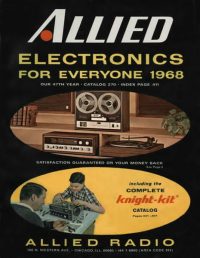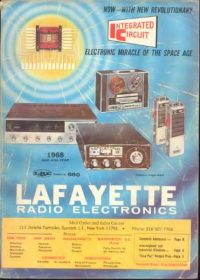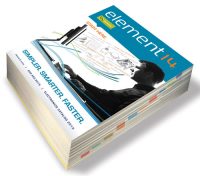Catalogs are about possibilities
Catalogs are about Possibilities
Dan Romanchik, KB6NU

 When I was a kid, I used to regularly get catalogs, such as the Allied Radio and Lafayette Radio catalogs shown below, and pore over them for hours. Even if I couldn’t afford to buy the latest Knight-Kit or Lafayette shortwave radio, I could imagine what it would be like. These catalogs were chock full of possibilities.
When I was a kid, I used to regularly get catalogs, such as the Allied Radio and Lafayette Radio catalogs shown below, and pore over them for hours. Even if I couldn’t afford to buy the latest Knight-Kit or Lafayette shortwave radio, I could imagine what it would be like. These catalogs were chock full of possibilities.
I spent many hours poring over the Allied and Lafayette catalogs as a kid.
These two are from 1968, when I was 13 years old.
So, you can imagine how I felt when, last Thursday, I found both the Autumn/Winter 2017 DX Engineering catalog and the 2018-2019 Newark Electronics/element14 catalog in my mailbox.
DX Engineering has really taken the amateur radio world by storm over the last ten years or so. I probably don’t have to tell you about that. If you’re an active amateur radio operator, I’m sure that you have heard about—and probably ordered from—DX Engineering.
I think that DX Engineering did a very smart thing by investing the money in a print catalog. There’s something about browsing a print catalog that is just more satisfying than browsing online.
DX Engineering has just about everything you need to have fun with amateur radio. The one glaring omission? They still don’t carry my study guides!

 The Newark/element14 2018-2019 catalog is a completely different beast. Amateur radio operators are only a small part of Newark/element14’s market, but one nonetheless. They have, for example, attended the Dayton Hamvention for many years.
The Newark/element14 2018-2019 catalog is a completely different beast. Amateur radio operators are only a small part of Newark/element14’s market, but one nonetheless. They have, for example, attended the Dayton Hamvention for many years.
As such, the catalog is not a “ham radio” catalog, but if you build stuff at all you’ll find something of interest in its 1,799 pages. It includes nearly any kind of electronic part that you might need.
The section that might you might want to start with is the “makerspace” section. In this section, you’ll find Raspberry Pis, BeagleBones, and even micro:bits. They really have everything, though, including passive and active components, connectors, cable, and enclosures.
Like I say, these catalogs are all about possibilities. You can search each company’s website and find the parts they carry quickly and easily, but that experience is just not the same as browsing a print catalog and daydreaming about what you might find there.
So, get your own copies—they’re free—and page through them. I’d be surprised if you didn’t run across something that you didn’t know about before, and it gave you some ideas about your next amateur radio project.